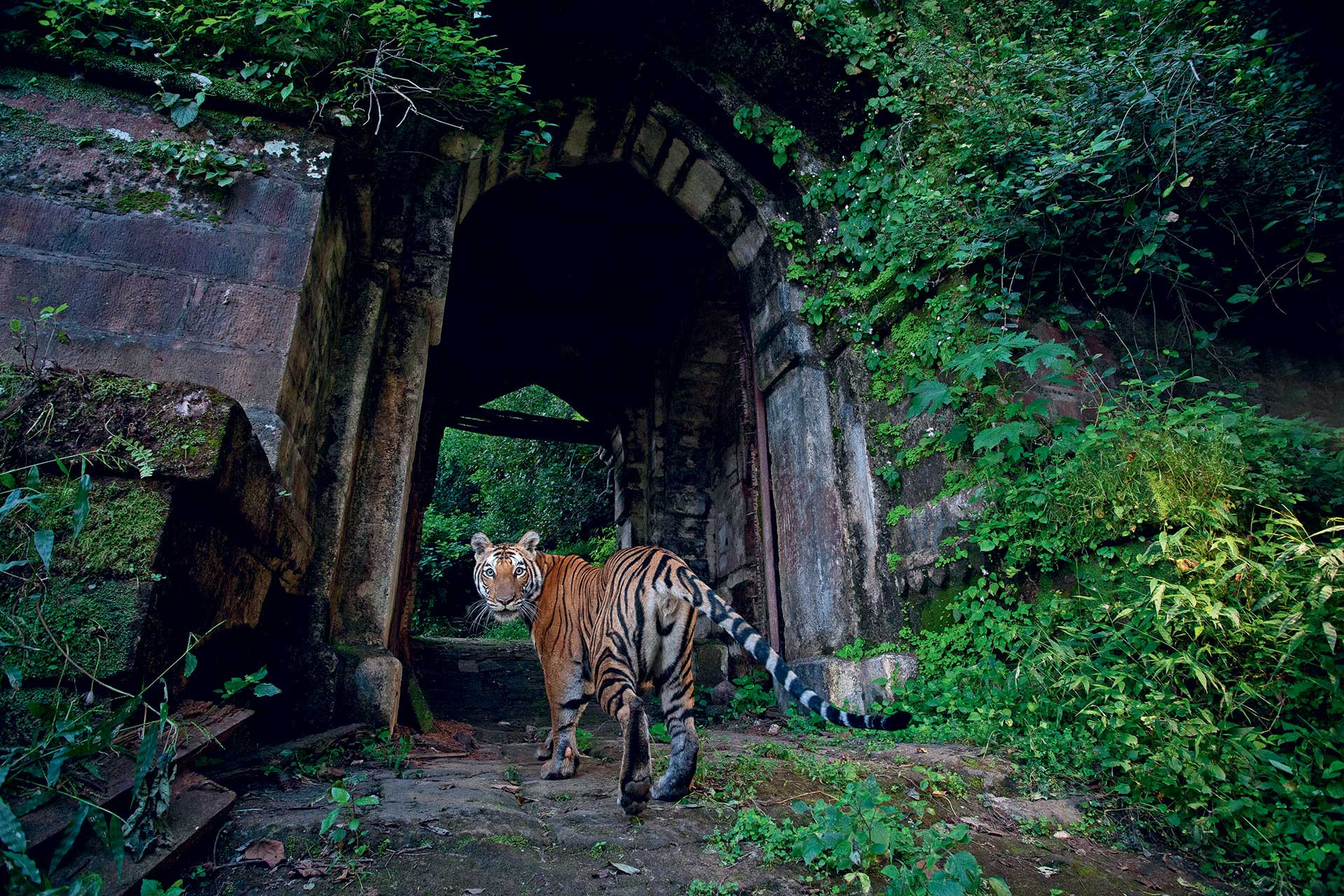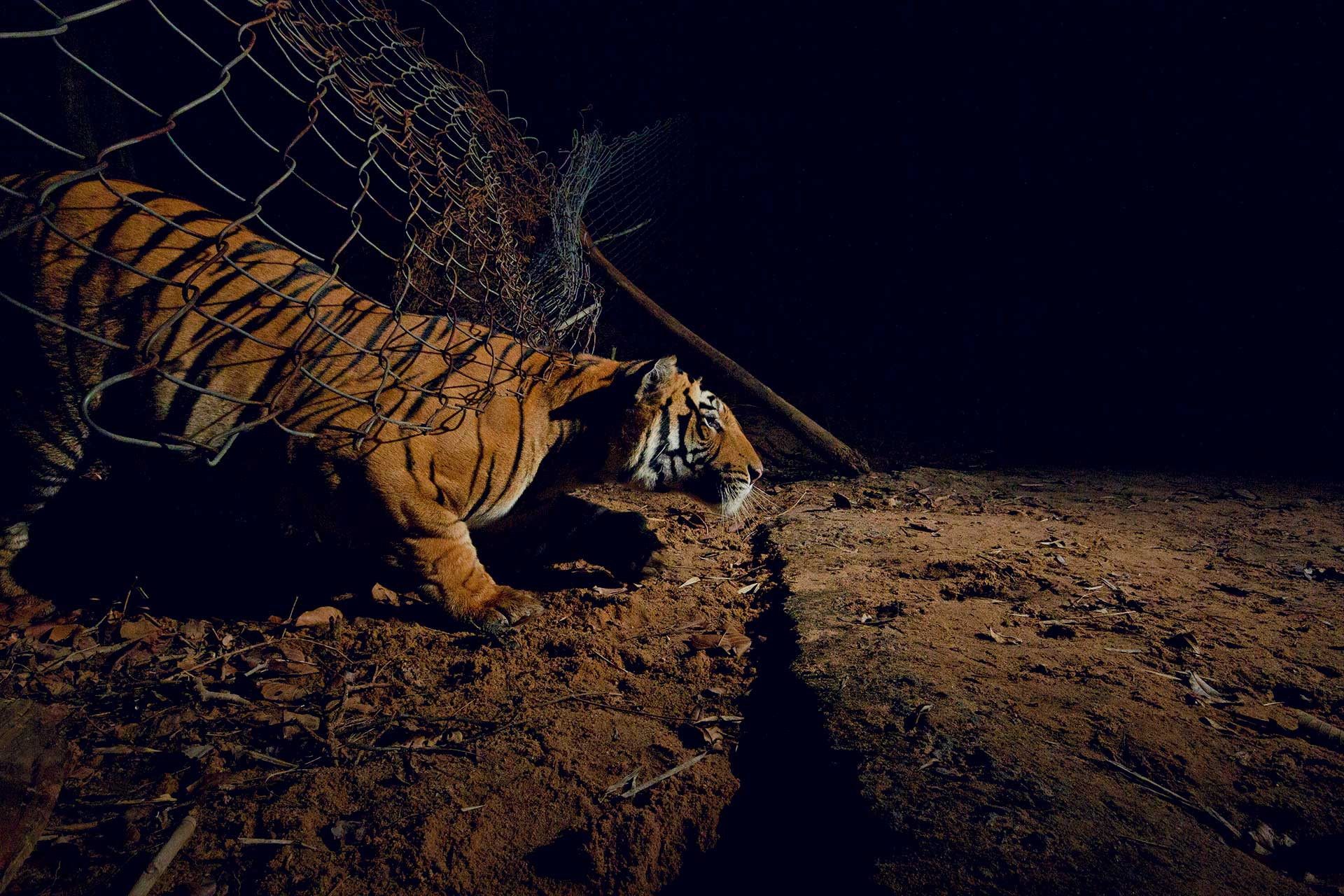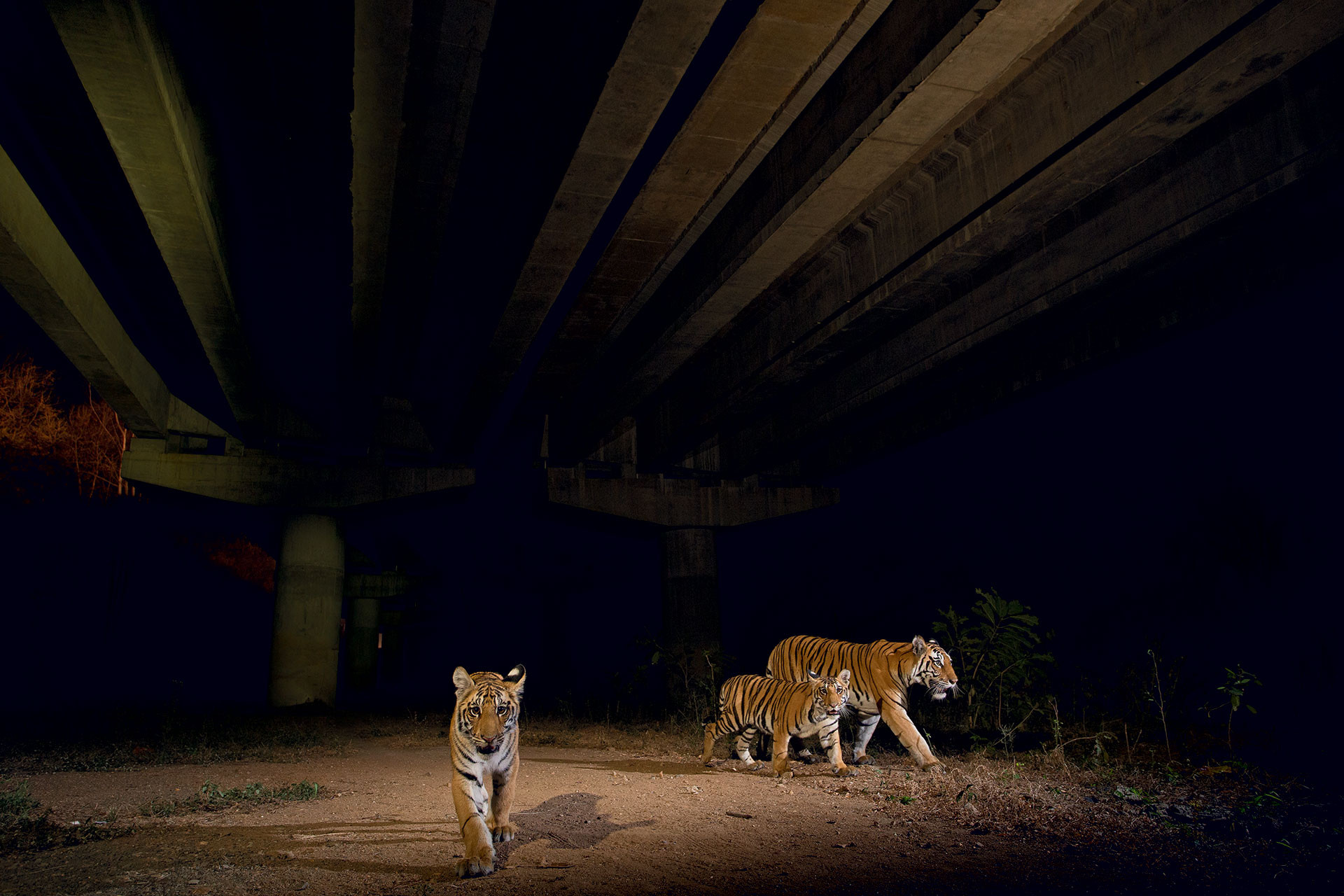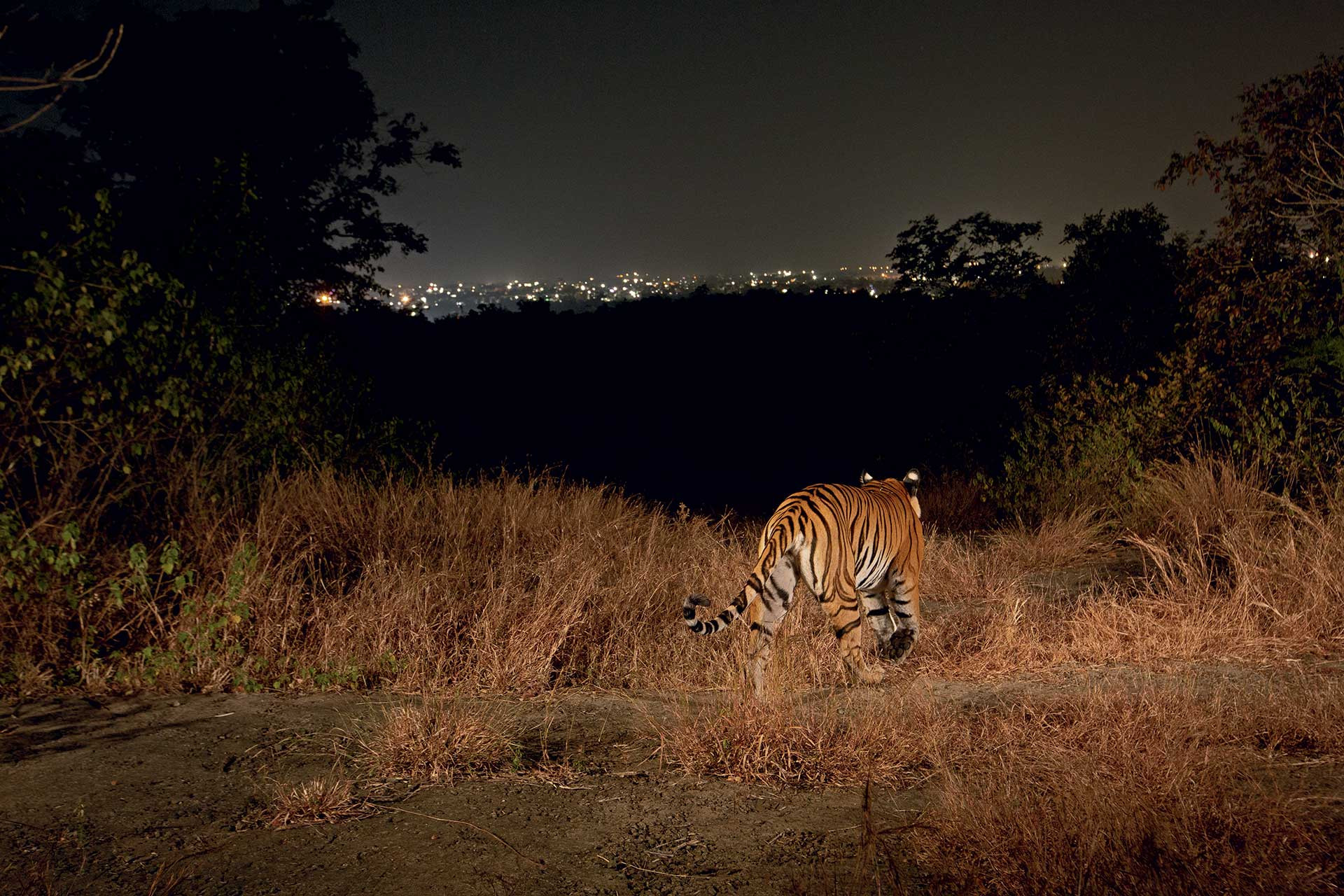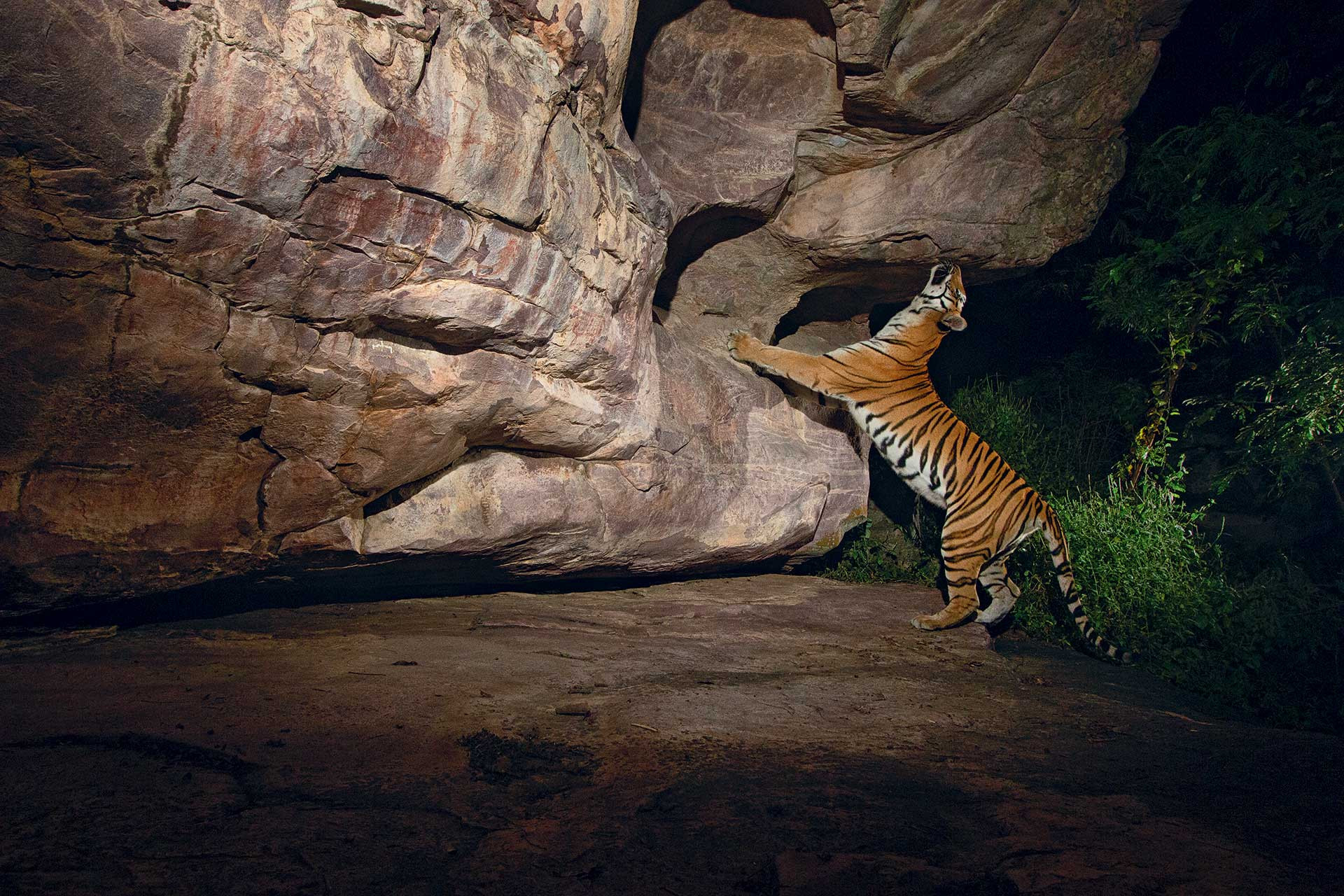Tiger Tiger Burning Bright tells the story of the planet's greatest conservation success story, Project Tiger and how India saved the tiger from the brink of extinction.
Authored by wildlife photographer Yashpal Rathore and Vijay Mohan Raj, APCCF, Karnataka Forest Department, the book encapsulates decades of work in the tiger jungles across India and features images from 35 photographers.
The coffee table book chronicles the history of the large cat in India, the development of Project Tiger, the various tiger landscapes, the threats, and the gamechangers. The book also casts its gaze on the future of tigers in India.
A must-have for all nature lovers, the coffee table book is available for purchase online.
This is an excerpt from Tiger Tiger Burning Bright, pp. 250–253.
***
New Age Tigers
By Anish Andheria
Tiger conservation has come a long way since the launch of Project Tiger in 1973. For a considerable amount of time, the focus of the project was to enhance and stabilise tiger populations inside Tiger Reserves. Some states were more successful in this than others.
However, in the past fifty years, barring a couple of hiccups, tiger numbers have steadily gone up in India, especially between 2006 and 2022, when their numbers rose from 1411 to 3682. Tigers are currently found in 18 states. Of these, some states have been able to protect them both inside Tiger Reserves and along corridors, while some have struggled.
Protecting tigers in an in- violate space such as the core of a Tiger Reserve is relatively straightforward. However, sustain- ing protection along corridors is a challenging proposition, especially because these are multiple-use areas with a complex mosaic of human habitations and forest patches.
The significant success of Project Tiger is as much an outcome of good quality protection inside Tiger Reserves as it is the presence of fairly well-protected tiger-worthy habitats outside PAs, at least in states that are a stronghold of this large-ranging species.
The traditional definition of a corridor is an area that allows the safe passage of wild animals from one breeding area to another. However, some areas, which are currently classified as corridors, actually possess a very healthy resident, breeding population of tigers. One such area is the Brahmapuri Forest Division, which is approximately 1100 sq. km in size and situated to the east of Tadoba-Andhari Tiger Reserve (TATR) in the Chandrapur District of Maharashtra. This Division harbours over 600 villages and a density of 2.6 tigers per 100 sq. km.
On average, this population adds over 20 cubs to the landscape every year. In fact, the tiger density of Brahmapuri is greater than several Tiger Reserves in India! In the absence of an adequate number of large-bodied wild prey, the tigers of Brahmapuri rely on cattle and wild boar to meet their energy requirements. As a result, over 5,800 cattle have been killed by carnivores, largely tigers, in 7.5 years between April 2014 to Oc- tober 2021. To add to this, during the same period, nearly 55 people have lost their lives to wildlife, of which tigers are responsible for 35 human deaths.
At the same time, there is a 300 sq. km forest block called Junona to the south of and contiguous with TATR that has a tiger density of 4 per 100 sq. km, which is considerably higher than that of Brahmapuri. However, the number of negative interactions between people and tigers is much lower in Junona than in Brahmapuri.
Interestingly, long-term research has shown that forest loss and/or forest degradation play a bigger role in higher human-tiger interactions than tiger density. Camera-trap data clearly indicates higher rates of forest degradation and fuelwood extraction in Brahmapuri than in Junona, which in turn directly correlates with the number of humans entering the forest. Areas prone to frequent attacks by tigers on humans not only show higher human activity but also a greater incidence of man-made forest fires.
Research further shows that there is a constant exchange of tigers between TATR and adjoining forest blocks of Brahmapuri and Junona. As per the 2022 All India Tiger Estimation exercise, Maharashtra harbours 444 tigers, of which about 290 are found using the state’s Tiger Reserves, indicating that over 150 tigers reside exclusively in the intervening corridors and other small-sized sanctuaries along the corridors. Government data on compensation provided to families that have suffered human loss at the hands of a tiger indicates that nearly 67% of the tiger-related conflict cases are attributed to tigresses that are raising cubs in areas with high human activity.
The future of tiger conservation will depend on implementing science and data-driven solutions that benefit both people and tigers so that the rate of negative interaction is reduced drastically. Continued conflicts will tend to turn people who are culturally pre-disposed to not be aggressive towards large carnivores, against the tiger eventually eliminating them. A semblance of this is being observed in villages in other corridors where electrocution or poisoning of tigers has become more frequent in recent times.
Some important actions that will be needed to encourage the co-inhabitation of tigers and people include:
→ Housing conflict-prone tigers in captivity permanently rather than relocating them to another site.
→ Avoiding the removal of resident individuals who are not involved in any kind of conflict as this leads to a temporary increase in the density, escalating the probability of conflict.
→ Reducing the response time in unambiguously identifying and capturing a tiger that is involved in conflict.
→ Improving the capacity of the rescue teams and veterinarians to successfully diffuse conflict situations in a minimum amount of time.
→ Deploying Rapid Response Units in conflict-prone regions in partnership with villagers so that they act as first respondents and also assist in preventing mobs from gathering around the carnivore.
→ Safeguarding contiguous forest blocks through forest restoration programmes by planting an assortment of native tree species, understory, and grasses to sustain healthy prey assemblages.
→ Halting forest degradation and loss in forest cover, restricting fuelwood extraction in sensitive areas, and abandoning clear-felling of forests.
→ Promoting bamboo plantations in Forest Development Corporation and Territorial Forests to substantially improve the quality of degraded habitat and fodder availability for wild prey.
→ Modifying working plans of the forest divisions that support healthy tiger presence to move away from highly intensive forestry practices. There is a direct correlation between human-tiger conflict and forest degradation.
The determining factor in catalysing social acceptance for tigers in corridors can be only achieved if focused Government schemes to improve livelihood options and awareness are built around these mixed-use areas. Unless people are aligned with the conservation of large carnivores and prey, corridors will lose their functionality.
While the tiger is slowly reclaiming a lot of its previous range, there are many other landscapes in states that have a rich potential for tiger revival. Almost all these landscapes harboured substantial tiger populations right up till 1972, but lost their tigers between 1972 to 1990. All of these landscapes still have intact habitats and can be reoccupied by tigers if effective conservation measures in collaboration with local communities are initiated.
These include:
1. West Madhya Pradesh landscape (Burhanpur-Khandwa to Alirajpur-Jhabua districts)
2. East Gujarat landscape which includes the forests of Banaskantha, Sabarkantha, Aravalli, Mahisagar, Da- hod/Baria, Panchmahal, Chhota Udaipur and Rajpipla/ Narmada districts.
3. South Gujarat (Dangs) – Khandesh (Maharashtra) landscape
4. Kota (Mukundra Hills) – Bundi, Chittorgarh, and Mount Abu landscapes in Rajasthan
5. Dholpur (Rajasthan) – Gwalior (Madhya Pradesh) landscapes which include the forests of Dholpur, Sheopur. Gwalior, Datia, Guna, Shivpuri, Lalitpur and Tikamgarh districts
6. Rewa (Madhya Pradesh) – Bundelkhand (Madhya Pradesh – Uttar Pradesh) – Kaimur hills landscape. This huge forested landscape spans across Sagar, Damoh, Satna and Rewa Districts (in Madhya Pradesh); Mirzapur, Sonbhadra, Banda, Mahoba, Hamirpur and Chitrakoot districts (in Uttar Pradesh); and Rohtas and Kaimur districts in Bihar
7. Eastern Terai belt which includes Suhelwa and Sohagi Barwa Wildlife Sanctuaries in Uttar Pradesh merging into Valmiki Tiger Reserve in Bihar
8. North Bengal landscape (Buxa-Gorumara-Jaldapara-Champramari-Mahananda-Neora-Sikkim-Bhutan)
Tigers have already shown that they can recolonise their erstwhile haunts. In Madhya Pradesh, surplus tigers marching out of Ratapani Wildlife Sanctuary near Bhopal have now populated forests all the way from Bhopal to Indore (with one even marching on into Gujarat), including the Kheoni Wildlife Sanctuary in Dewas where tigers were last recorded in the 1950s. Panna’s surplus tigers have moved into adjoining districts and all the way up to Ranipur Wildlife Sanctuary in Uttar Pradesh and onwards into Mirzapur forests. Similar repopulations have happened in specific pockets of the Western Ghats and Terai landscapes. Hence, it is not too far-fetched to work towards the regeneration of the aforementioned erstwhile tiger landscapes.
***
A must-have for all nature lovers, the coffee table book is available for purchase online.

